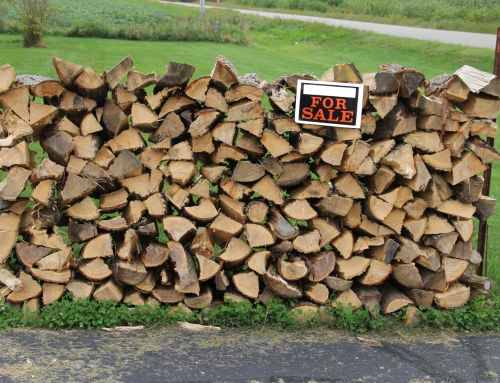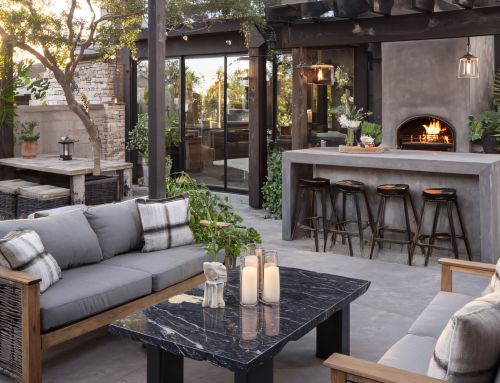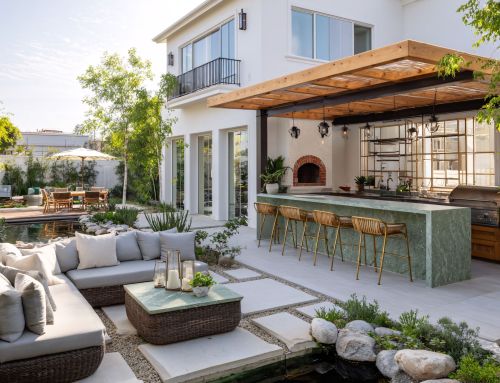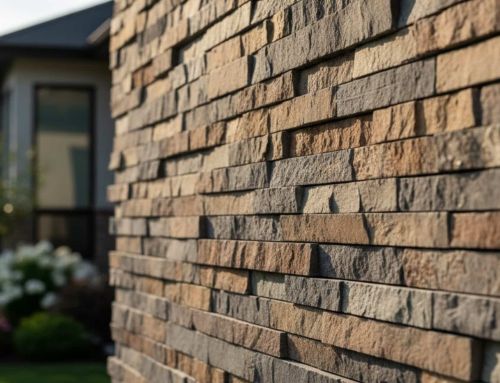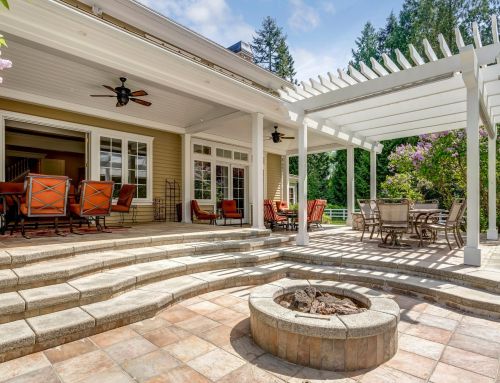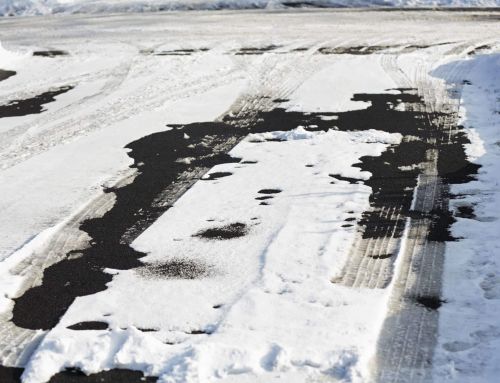What is Granite? A Complete Guide to Its Properties and Uses
Granite has come a long way. Formed deep in the Earth over 300 million years ago, this tough, beautiful stone now adds elegance and strength to homes, buildings, and landscapes around the world. From ancient monuments to modern kitchens, granite’s durability and charm make it a timeless favorite. Whether you’re renovating, building, or just curious, learning about granite’s qualities can help you choose the right material with confidence.
Understanding Granite: Geological Formation and Composition
Granite is a coarse-grained igneous rock that forms deep underground when magma cools slowly, allowing large crystals to develop. This slow cooling gives granite its signature speckled appearance with visible minerals like quartz, feldspar, and mica. While once thought to form only from cooling basaltic magma, many geologists now believe granite also forms through the melting or metamorphism of deeply buried shale and sandstone.
What sets granite apart is its unique mineral and chemical composition. It typically contains 10–50% quartz and over 80% feldspar, with mica, hornblende, and other minerals adding color and pattern. Chemically, it’s high in silica and alumina, making it tough, weather-resistant, and ideal for construction and design.
Types and Classification of Granite
Not all granite is created equal. Classification systems have evolved to distinguish different types of granite based on mineral composition, origin, and appearance. The most common classification considers the ratio of dominant to subdominant feldspar, which creates numerous varieties with different performance characteristics.
Source region classification divides granites into two major categories:
- I-type granitoids: Derived from igneous protoliths, containing moderate amounts of aluminum oxide and high amounts of sodium oxide. These typically feature amphibole and pyroxene.
- S-type granitoids: Derived from sedimentary protoliths, containing high amounts of aluminum oxide and relatively low amounts of sodium oxide. These may contain garnet, cordierite, and sillimanite.
Granite’s stunning color variations come from its mineral makeup—pink and red from feldspar, darker tones from biotite and amphibole, and lighter shades from quartz. These natural differences make each slab one of a kind. With colors ranging from black and gray to pink, green, blue, and white, granite offers versatile options to suit any design style or project.
Granite Mining and Processing
Granite is mainly extracted through open-pit mining. After removing the surface layer (overburden), quarries use diamond wire saws, drills, or controlled explosives to extract large blocks for dimension stone. These blocks are then cut into slabs, finished with techniques like polishing or flaming, and shaped for use in construction or design.
For crushed stone, granite is broken down using crushers and screens to produce aggregate, which accounts for about 16% of crushed stone use in the U.S. Finishing techniques give granite its final look—ranging from sleek, polished surfaces to rough textures for slip-resistant outdoor use—making it a versatile material for nearly any application.
Granite in Landscaping Applications
Granite’s exceptional durability makes it perfect for outdoor settings where materials must withstand constant exposure to elements. Unlike many materials that deteriorate quickly, granite maintains its appearance and structural integrity for many years with minimal maintenance, making it a wise investment for landscape projects.
In landscaping, granite appears in numerous forms:
- Stepping stones and walkways – Granite slabs or pavers create stable, long-lasting paths that resist wear and weather. They blend beautifully into natural settings and add structure to garden layouts.
- Retaining walls – Stacked granite blocks provide essential support for sloped terrain while offering a rustic, natural appearance. These walls are both functional and visually striking.
- Water features – Granite’s natural color and texture make it ideal for fountains, waterfalls, and ponds. It adds elegance and durability to features that are constantly exposed to moisture.
- Decorative accents – From sculptural boulders to edging stones, granite brings texture, contrast, and interest to flower beds, garden borders, and outdoor living spaces.
- Crushed granite pathways – When compacted properly, crushed granite offers a stable, low-maintenance surface that allows for water drainage. It’s available in various colors and works well in both modern and rustic designs.
- Erosion control – Larger pieces of granite are often used around waterways or on slopes to prevent soil displacement. Their weight and irregular shapes help anchor the soil and reduce runoff effectively.
Granite as a Building and Construction Material
Granite has been used for centuries in construction thanks to its strength, durability, and timeless appeal. Ancient builders chose it for monuments and public structures, and today it remains a top choice for both structural and decorative purposes in modern architecture.
Common uses include building blocks, exterior cladding, flooring, wall coverings, and countertops. With high compressive strength, low water absorption, and excellent resistance to wear and weather, granite outperforms alternatives like marble and quartz in both durability and long-term value. Its natural beauty and proven longevity make it a lasting investment for any project.
Granite Countertops: The Kitchen Favorite
Granite countertops are a favorite in kitchen design thanks to their unmatched blend of beauty, durability, and functionality. With a hardness rating of 7 on the Mohs scale, granite resists scratches, handles hot cookware without damage, and features one-of-a-kind natural patterns. With proper care, these countertops can last for decades.
The process starts by selecting a slab from a showroom, then measuring, cutting, and installing it to fit your space precisely. While granite can be more expensive upfront, its long lifespan and timeless appeal often make it a cost-effective investment in the long run.
Maintenance and Care
One of granite’s most appealing aspects is its relatively simple maintenance requirements. For granite countertops, regular cleaning with mild soap and water is usually sufficient to maintain appearance. Additionally, sealing the surface periodically (typically every 1-3 years, depending on use) helps prevent staining and ensures longevity.
For outdoor granite applications, maintenance is even simpler. Rain naturally cleans the surface, while periodic rinsing can remove accumulated dirt or debris. Unlike wood or concrete, granite doesn’t rot, crack easily, or require frequent treatments to maintain its structural integrity.
Common concerns about granite maintenance include:
- Staining: While granite can stain if left untreated, properly sealed surfaces resist most common household substances.
- Cracking: Granite’s natural toughness makes cracks rare, though they can occur with significant impact.
- Etching: Unlike marble, granite resists etching from acidic substances, making it ideal for kitchen use.
- Color fading: Granite maintains its color remarkably well, even in outdoor applications exposed to sunlight.
Simple precautions like using cutting boards (to protect both the stone and your knives) and promptly wiping spills can keep granite looking new for decades. This combination of beauty and low maintenance makes granite a favorite for busy households and commercial applications alike.
Environmental Considerations
As consumers become increasingly environmentally conscious, granite’s sustainability profile deserves attention. As a natural material that requires minimal processing compared to manufactured alternatives, granite often represents a more environmentally friendly choice. Its longevity also means fewer replacements and less waste over time.
Modern quarrying operations have made significant strides in minimizing environmental impact through:
- Improved extraction techniques that maximize material use
- Reclamation practices that restore quarry sites after use
- Water recycling systems that reduce resource consumption
- Waste stone repurposing for crushed applications, ensuring minimal waste
When selecting granite, asking about sourcing and production methods can help ensure you’re choosing stone harvested using responsible practices. Many suppliers today are proud to highlight their sustainability commitments and can provide information about their environmental standards.
Conclusion
Granite is more than just a building material—it’s a naturally formed stone with unmatched strength, beauty, and versatility. Whether used in kitchen countertops, exterior cladding, garden paths, or public monuments, granite continues to prove its value across generations. Its resistance to weathering, low maintenance needs, and timeless visual appeal make it a smart choice for both residential and commercial projects.
Ready to bring the beauty and durability of granite into your next project? Visit Old Station Outdoor & Landscape Supply in Norton, MA—we proudly serve homeowners and contractors across Massachusetts, Rhode Island, and Connecticut. Explore our wide selection of granite stone for countertops, landscaping, and construction. Our knowledgeable team is here to help you find the perfect fit. Stop by our showroom or contact us today to get started with expert guidance and premium materials.
FAQs
What is granite used for?
Granite is used for countertops, building facades, monuments, flooring, landscaping elements (like pathways and retaining walls), and as crushed stone for construction projects and road bases.
Where is granite found?
Granite is found throughout the continental crust, most commonly in mountainous areas, forming large formations called batholiths that can span thousands of square kilometers across North America, Europe, and other continents.
What is the importance of granite stone?
Granite’s importance stems from its exceptional durability, heat resistance, and unique aesthetic qualities, making it a premium choice for both structural and decorative applications that have stood the test of time for centuries in buildings, monuments, and modern homes.
How strong is granite?
Granite is an extremely strong rock with a compressive strength of 100-300 MPa, ranking 7 on the Mohs hardness scale (with diamond at 10), making it highly resistant to scratching, cracking, and weathering even under demanding conditions.
Which is better, granite or quartz?
This depends on your needs—granite offers unique natural patterns and superior heat resistance, while quartz provides consistent coloring and requires no sealing. The big difference is granite’s one-of-a-kind natural beauty versus quartz’s engineered uniformity and slightly easier maintenance.


